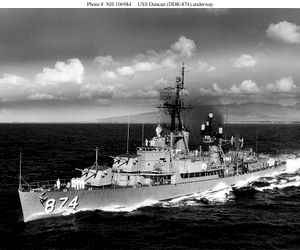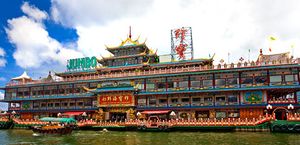Hong Kong
and should NOT be used for any reason other than reading enjoyment |
Hong Kong is a island/city in the eastern Pearl River Delta by the South China Sea. With over 7.4 million people of various nationalities in a 1,104-square-kilometer (426 sq mi) territory, Hong Kong is one of the most densely populated places in the world.
Hong Kong became a colony of the British Empire after the Qing Empire ceded Hong Kong Island at the end of the First Opium War in 1842. The colony expanded to the Kowloon Peninsula in 1860 after the Second Opium War, and was further extended when Britain obtained a 99-year lease of the New Territories in 1898. The whole territory was returned to China in 1997. As a special administrative region, Hong Kong maintains separate governing and economic systems from that of mainland China under a principle of "one country, two systems".
Originally a sparsely populated area of farming and fishing villages, the territory has become one of the world's most significant financial centers and commercial ports. It is the world's tenth-largest exporter and ninth-largest importer. Hong Kong has a major capitalist service economy characterized by low taxation and free trade, and the currency, Hong Kong dollar, is the eighth most traded currency in the world. Hong Kong hosts the largest concentration of ultra high-net-worth individuals of any city in the world. Although the city has one of the highest per capita incomes in the world, there is severe income inequality among its residents.
Station Ship, Hong Kong
While doing our Westpac tour, USS Duncan was assigned duty as "Station Ship, HongKong" for thirty days to show the flag in the far east. Since we were carrying the Squadron Commander (ComDesRon Nine), he was the "Senior Officer Present Afloat". His Communications Officer was on leave so I was assigned his duties (and privileges - LOL). Hong Kong had three different populations: The British, the Chinese, and the transients. US Navy sailors were warned about what part of the island were "unsafe" - not off limits - just "unsafe".
I spent much of my liberty time hanging out at the various "British businesses, clubs and venues", with an occasional side trips to the Chinese sectors. There was very little of anything or anyone you couldn't buy for a few Chinese dollars - American dollars went three to ten time further.
What not to sat in a British Military bar when talking to a man wearing a plaid kilt? "That's a cute skirt". (Personal, first hand experience of an inebriated American sailor.)
Duncan, like most US warships, got a paint job from Mary Soo and her gang of girls. It is a simple transaction: Duncan provided the paint; Mary Soo provided the (wo)manpower. The cost was simple: Mary Soo stationed about a dozen people to scavenge any food left on the mess trays at the end of meals. The food, separated by type {wet, dry, breads and proteins), was taken ashore and traded for goods and money to the residents of Hong Kong. By the '90s, Mary Soo was one of the wealthiest residents of Hong Kong.
Toward the end of our stay in Hong Kong, there was a shipping strike and a strike by dockworkers, so many ships went unloaded. Honk Kong ran out of American beer, and Duncan was renamed the "Drunken Duncan". Imagine how it looked when an American destroyer (and a few ships in the squadron) pulls into a port and it runs out of beer!
I bought three suits with matching silk shirts for $25, and they threw in neckties.
While in port, I was able to visit Tiger Balm Gardens, Victoria Island, and Aberdeen.
Tiger Balm Gardens
The mansion and gardens was located at 15 Tai Hang Road, Tai Hang, Wan Chai District, Hong Kong. The Tiger Balm Garden was demolished for redevelopment in 2004. The Haw Par Mansion and its private garden have been preserved.
- More information is available at [ Wikipedia:Tiger Balm Garden ]
Aberdeen
Land in Hong Kong is at a premium, so the south side of the island became home to huge floating restaurants. These barges are in a single word, huge! And the food was absolutely wonderful. I'll give you a clue. Years later at a meeting of a dozen 'techies', the topic of food came up. All of us had, at one time or another, had visited the same floating restaurant in Hong Kong!
See also [ Aberdeen update ]
Bottoms Up Club
The Bottoms Up Club was a girlie bar in Hong Kong. The bar became notorious for its appearance in the 1974 James Bond film The Man with the Golden Gun. The interior of the club evoked the interior of the club as seen in the film.
History
The Club opened in the basement of Mohan's Building at 14 Hankow Road in Tsim Sha Tsui, Kowloon, in March or May 1971. One of its early managers was Pat Sephton, a former Windmill model . A 1994 court ruling requested it to remove its naked-buttocks neon sign, and to have its naked dancers wear bras or negligees. The Tsim Sha Tsui location closed in April 2004. Rising rents were cited as possible reasons for the closure. The Club re-opened at the first floor of David House, 37–39 Lockhart Road in Wan Chai in May 2004, this time mainly as a sports bar, with one of the original bars being recreated in a back room.
The club closed down in July 2009.
- More information is available at [ Wikipedia:Windmill Theatre#Windmill_Girls ]
In BackDrop lore
In the late 1970's, Tom (a Backdrop member) traveled to Hong Kong. He was so taken with the place, he brought several boxes of matches with the "Bottoms Up" logo printed on them.
He would often place a book of matches on tables of restaurants just to see the reactions of waitresses and other clients of the restaurant.
Chat rooms • What links here • Copyright info • Contact information • Category:Root

